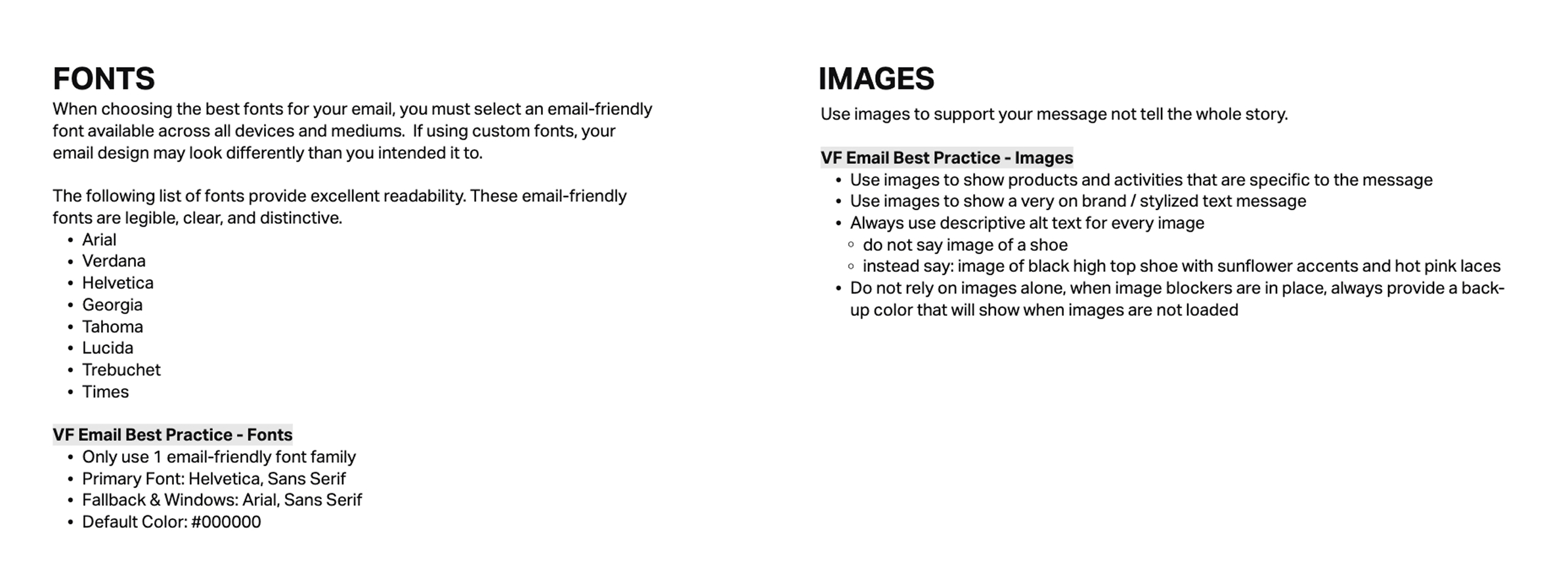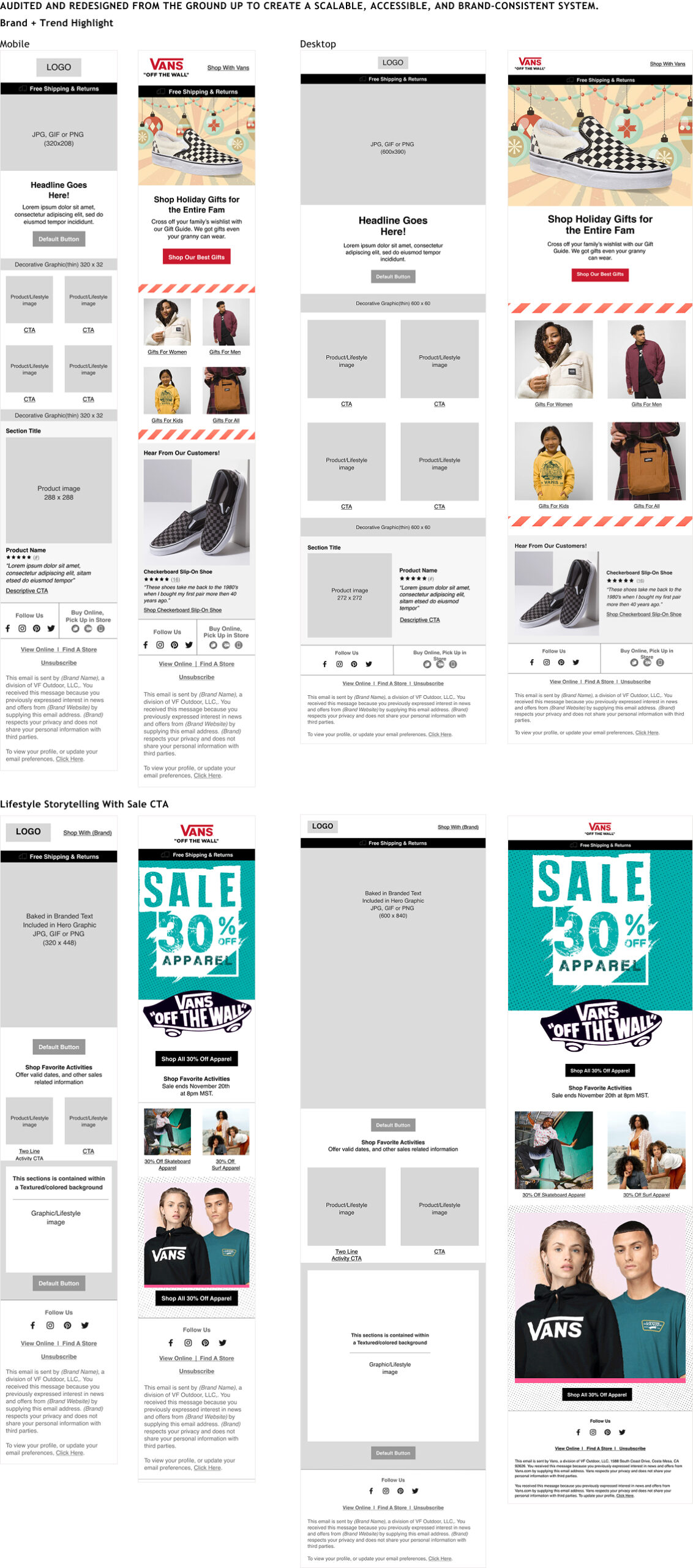Design | Research | Cross-Team Collaboration & Alignment
Sketch | Invision | Abstract
B2B | B2C | Email Marketing
Fashion | Retail

The audit and research phase included:
I proposed a 0→1 modular email design system, focused on clarity, consistency, and flexibility. The system would allow for creative freedom while ensuring performance, accessibility, and branding guardrails.
Key design decisions included:

I worked closely with the email marketing team and developers using Salesforce Marketing Cloud, ensuring every component was implementation-ready and tested across major email clients.

Over 3 months, I built the system in Figma as a reusable component library with clear documentation. We launched it across Vans’ seasonal campaigns first, then shared it across the broader brand portfolio.
The new email design system created a foundation that was:
This project was a win not just for visual design — but for process, scale, and long-term usability across teams.
In line with Nielsen Norman Group’s guidance, the system improved usability for both customers and internal teams. By reducing ambiguity, accelerating production, and enabling scalable design across brands, it strengthened collaboration and consistency across every touchpoint.
The system was built in close collaboration with developers and the email marketing team using Salesforce. By documenting patterns and providing usage guidelines, I reduced back-and-forth during handoff and empowered non-designers to assemble emails confidently. Marketing teams could now A/B test faster, swap modules without design support, and focus on messaging instead of layout — leading to a more agile campaign process and stronger alignment across brand and tech.

This was a true 0→1 product design challenge—starting with a broken system and building a scalable, brand-aligned solution from the ground up. It taught me how to strike a balance between design creativity and implementation feasibility, and how modular systems can drive both efficiency and consistency at scale.